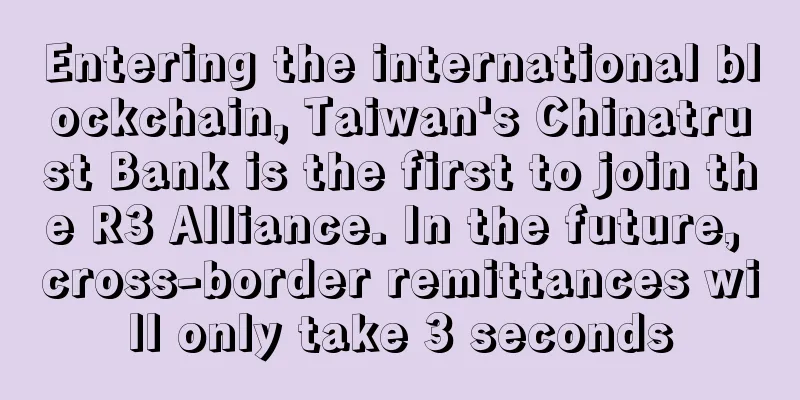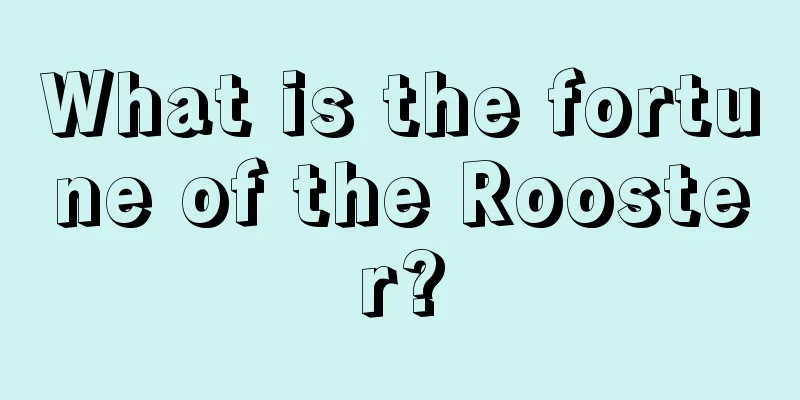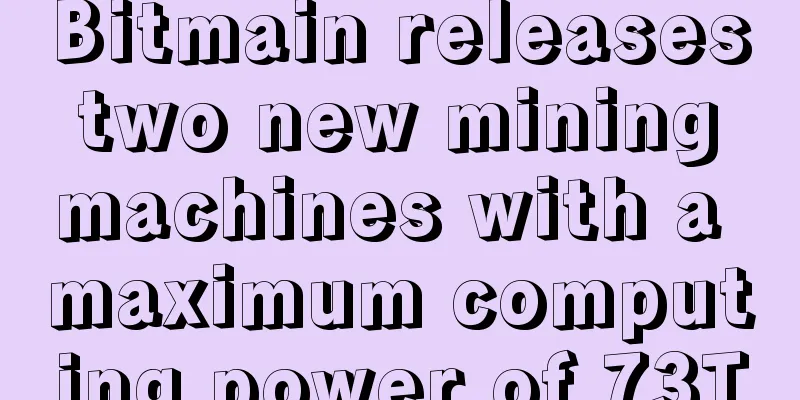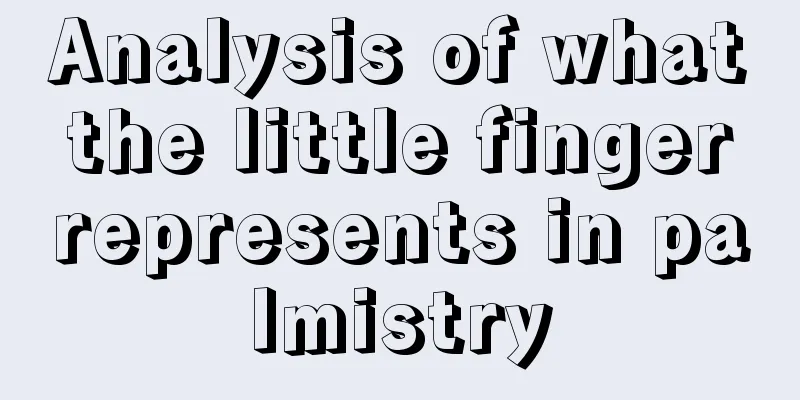Dialogue with Merlin Chain founder Jeff: Why are retail investors uncomfortable? Because they feel they are being cut by institutions.

|
As of February 23, within 14 days of the launch of the Bitcoin L2 network Merlin Chain mainnet staking activity, the total TVL has exceeded 1.97 billion US dollars. This is an interview with Jeff, the founder of Merlin Chain, which lasts about 50 minutes. It includes Jeff's personal experience, macro judgment on the Bitcoin L2 ecosystem, Merlin Chain's positioning and experience sharing. Please tell us about your past experiences Jeff: I learned about blockchain relatively early. When I started my business in 2012, our investor IDG invested in Coinbase and Ripple. At that time, the investor (IDG) was very enthusiastic about talking to our group of young entrepreneurs about blockchain. So it was from that time that I started to understand the Bitcoin white paper and buy cryptocurrencies. At that time, I bought a lot of BTC, and later XRP and LTC. I am a technical person, and my belief in blockchain was actually established in the early days, including many offline chats and gatherings with domestic OGs in the early days. However, I have been doing Web2 startups and have not joined the Web3 wave. Until the beginning of last year (2023), the entire Web2 dollar market was not very good, so I looked for some opportunities in Web3. Ordinals came out at that time, which also gave us some new ideas about the Bitcoin ecosystem. At the beginning of last year, many people in the industry were pessimistic about Ordinals. Some people said it was just a MEME, or just a short-term FOMO in the Bitcoin ecosystem. However, the opportunities we see are the opposite, with three points. The first is a bottom-up issuance method, community-driven assets, and a new narrative from assets to projects. This means that the asset itself is formed by the community from the bottom up. When the community has fully mastered the asset, the community will then build the asset in reverse. Unlike traditional blockchain projects, the project party first has an idea, then they distribute tokens, and make products to attract more users. Now Bitcoin is the opposite. The community first finds the asset, the community first launches the asset, and the people in the community build applications, ecosystems, and empowerment based on the asset. Including the entire community of the BRC-20 ecosystem that we have seen recently, they build Launchpad, games, and even Layer2 by themselves. So I think the change in the entire narrative is the first opportunity we see. The second opportunity we see is the composability of all content after it is put on the chain. Because in the past, many Ethereum contents were not put on the chain. All the content on the Bitcoin side, whether it is game content, application scripts, or social assets, all these contents must be put on the chain and open source on the inscription. Therefore, the composability of the content on the chain, including what we actually started with BRC-420, is also influenced by this philosophy, which is to open source and modularize the content on the chain and eventually turn it into assets. The third opportunity is a macro opportunity, which is Bitcoin itself. The amount of Bitcoin funds is very large, at a trillion scale. However, under this trillion scale, there has been no good ecosystem and no financial interest, so most BTC big holders just put their money in cold wallets and have no way to make money through this, but this demand cannot be ignored. Now there are many CeFis doing BTC lending and financial management, and the potential of this amount of funds is here. Even if we just build a little ecosystem, I think the financial impact on this amount of funds will be greater than that of Ethereum L2. These are some of our ideas when we were doing Ordinals and Bitcoin ecology. What opportunities prompted you to start Merlin, and what is the current composition of the Merlin team? Jeff: Actually, developing Merlin is both accidental and inevitable. Last year, few people actually talked about developing Bitcoin L2. We started developing applications, recursive graffiti, recursive forums, and on-chain voting in June last year. Later, we developed Bitmap language and metaverse, Bitmap game engine and editor, and then released BRC-420 asset protocol, and then the assets on BRC-420 protocol became more and more abundant. In this process, we actually interact with developers and users in groups and on Twitter every day, and on Twitter Space. An obvious problem is that everyone finds that what can be done on L1 is becoming more and more limited. What does it mean? When you want to make a game on L1 to empower Bitmap, you will find that it has very little interaction on L1. You want to allow users to compete, have game logic, do social networking, or do lunch chat and landing. All the things you want to do are limited by L1, and there is no way to do smart contracts. So at that time, we gradually concluded that Bitcoin must have a virtual machine environment, otherwise no matter how many good ideas there are, they cannot be realized. So, in fact, this matter itself is inevitable. At the end of last year, many Bitcoin L2 concepts began to surface slowly. We also had this idea, so we started to determine the Merlin project in October last year. We now have several lines in Bitmap Tech Labs, and of course we keep updating them synchronously. There are also some external teams helping us, such as the upgrade of the BRC-420 protocol, more application scenarios, and the open source and incubation of the entire Bitmap game, including many game projects around Bitmap in our ecosystem. I may have experienced more in the Merlin team, from chain to wallet to application Dapps. Generally speaking, our team has these businesses. What is the approximate size of the team? Jeff: Our internal development team is about 30 people. There are also some external teams working with us on some on-chain infra, on-chain DeFi infrastructure, including chain ZK upgrades, and market Eco, so there are about 30 people assisting our team externally. From the perspective of the team, what role do you think the Bitcoin ecosystem, especially L2, will play in the new round of bull market? Jeff: I think it is actually about activating Bitcoin money and activating new users. This is the same in any industry, whether it is Web2 or Web3. That is to say, either the financial leverage of the matter itself is high enough, and the money is very large, for example, whether you look at the US Treasury bond market or the US stock market, or the Chinese foreign trade market. There is a lot of money in the market, so Bitcoin first meets this premise, and the financial volume of Bitcoin itself is very large. However, the financial utilization rate of Bitcoin is very low, perhaps less than 1% or even 1/1000. I think first of all, Bitcoin L2 wants to leverage this part of unused assets through financial leverage. Imagine that if the trillion-dollar market value of BTC and the future Bitcoin-related BRC assets are activated, it may leverage much more money than Ethereum L2, because Ethereum's own assets are mainly returned to Ethereum L1, and Ethereum L1 itself is a practical ecosystem. The second is the innovations in the Bitcoin application ecosystem that we saw last year. Can we expand them? This bottom-up community-based natural issuance method, the composability of inscriptions on the chain, and the entire narrative generated digitally based on Bitcoin block data, follow this narrative, whether it is the metaverse or AI. So, to put it simply, I think Bitcoin L2 may play two roles. One is to improve the financial services that have not been well utilized in the past, and the second is how to make these native innovations on Bitcoin better. There are now many protocols and applications on Bitcoin. So for ordinary retail investors, what are the opportunities that are more certain to be seized? Jeff: I think this opportunity is still very clear. I still prefer to calculate this account in a big and mathematical way. When the market value of ETH is 200 billion to 300 billion US dollars, you will find that the total value of ERC-20 tokens is also 200 billion to 300 billion US dollars. Today, the market value of BTC is 1 trillion US dollars, but the total market value of BRC assets may be less than 10 billion US dollars. From 10 billion US dollars to 1 trillion US dollars, there is still 99 times of space in between. Of course, I am not saying that this 99 times space will definitely be realized or will be made up in the short term, but the trend and potential itself are actually relatively easy to calculate. Therefore, I think the most important thing for retail investors is the $10 billion of assets in the Bitcoin ecosystem, including Ordinals, Atomicals, etc. The process of gradually catching up from a market value of $10 billion to $1 trillion is actually a so-called bull market. According to statistics, there are now more than 30 Bitcoin L2s, which are divided into several categories such as sidechains, Rollups, and data availability. So for Merlin, what is the difference between it and other Bitcoin L2s, especially from a technical perspective? Jeff: Technically speaking, I think there is no real Bitcoin L2 now. We have always been telling you this in a realistic manner, because Bitcoin L1 cannot do settlement now. The biggest difference between it and Ethereum L1 is that Ethereum itself has the performance of smart contracts, so based on Ethereum, from the earliest Polygon Plasma to the OP Rollup solution, to today's ZK solution. Of course, this process has also gone through 5 years, and until today, a large number of OP and ZK solutions have not matured. So you will find that even if the Ethereum network itself has the characteristics of smart contracts, the entire Rollup time has been stretched to 5 years or even more than 10 years, and it may be stable, mature and secure. Then the first layer of Bitcoin itself does not have the ability of smart contracts, and there is no way to do settlement, so I think from a realistic perspective, there is no chain that can be rolled up to Bitcoin. Now, as for the entire technical direction, first of all, is it possible to transmit ZK Proof back to Bitcoin L1 in the form of an inscription, which means that all users, all nodes and all validators can obtain the open source and tamper-proof ZK Proof to verify the security of the chain. Secondly, we try to let Bitcoin L1 do the verification, or try to let a more decentralized network do the verification. Our current plan is to have a staking system and a POS Stakers mechanism on the chain. They can verify all ZK Proofs, and they themselves have pledged a large amount of BTC, and they can withdraw and claim for such malicious behavior or wrong reporting. At the same time, can there be a separate DA Layer under the Bitcoin layer, like Celestia? In addition, we have also cooperated and invested in several Bitcoin DA Layers, and they can serve as Bitcoin's 1.5 layer to verify our ZK Proof. If there is a problem, it is also the same mechanism, and the so-called claim or front proof is made for the wrong information, that is, to prove the existence of the fraud. Then some further settlement is done on L1 in some way. I think this is a more practical solution that can be gradually realized in the short term, that is, within the so-called 12 to 24 months. In the end, is it possible for the entire L2 to be reported and settled on L1? I think it is possible, but to be honest, given the nature and cycle of this matter, I believe it is actually difficult to achieve within five years. There has been some debate recently about whether L2 should continue to use Bitcoin's UTXO model. Some people believe that building a sidechain without UTXO is equivalent to abandoning the basic characteristics of Bitcoin. How do you view these views? Jeff: I think this is a purely aesthetic debate. Bitcoin L2 does not change Bitcoin L1, it is an extension of Bitcoin L1. Simply put, when BTC is transferred from the first layer to the exchange, the BTC still exists in the first layer of the exchange network, and the exchange has not changed it; secondly, when the BTC is in the exchange, it can be used for contracts and options, so it is impossible to say that contracts and options also violate Bitcoin's UTXO model. So, I think L2 is the same. L2 is to have more application methods for funds on the second layer, a more decentralized ecosystem, and more applications to play, but it itself does not change Bitcoin L1. So I think BTC whales or Bitcoin miners don’t care about L2 at all, because it doesn’t change anything. Instead, the form of the inscription affects the UTXO and transactions on Bitcoin L1, which are the points that Bitcoin miners and Bitcoin Maximalism care about. Since there is no change, it is just an extension, so I think discussing these things at this time is purely an aesthetic issue. Just like whether glutinous rice balls are filled with meat or sesame, and whether zongzi are sweet or salty, there is nothing to discuss. Back to Merlin. Two weeks after its launch, Merlin TVL has exceeded $1.9 billion, surpassing Blast. How did Merlin achieve such rapid growth in such a short period of time? Jeff: For many people who don’t pay much attention to the Bitcoin ecosystem, they may think that this is something that came out of nowhere, and they may not understand it. For us, although it did exceed our expectations, our long-term development on Bitcoin L1 has accumulated a lot of community ecology and user traffic for us. This is something that many people didn’t pay attention to before, and they didn’t know Bitmap or BRC-420. In short, in the Bitcoin ecosystem, you will find that in addition to BRC-20’s ORDI and SATS, which are listed on Binance and OKX exchanges, the second and third largest market value protocols are Bitmap and BRC-420. Therefore, we have the second and third largest user communities in the Bitcoin ecosystem, and we do the core development ourselves. Unlike BRC-20, which is a completely free protocol for issuing coins, Bitmap and BRC-420 are more vertical. So we have accumulated a lot of user traffic, and we understand what these users are playing, what assets they have, and their own commitment to the community. With this foundation already established, it is actually more foreseeable. Of course, for the outside world, this may be a quick thing; but for us, this matter is inevitable in some ways. How to maximize the security of users' funds Jeff: It may be stressful for users, but for us, the pressure is definitely greater. Simply put, the technical implementation of Bitcoin L1 assets is to store these assets in one address. The storage of these assets itself only involves the concept of multi-signature. It is different from Ethereum. Ethereum can make smart contracts and impose a lot of restrictions. The Bitcoin address is actually very simple, that is, who signs. If you sign, the money is yours, and if I sign, the money is mine. So the solution we have implemented now is a complete Bitcoin L2 solution that we developed with some security companies such as Cobo two or three months ago. This complete solution first ensures that the user's assets are participated by multiple signers on the first layer, and the interests of multiple signers are completely non-conflicting. Neutrality is to first ensure that the user's assets will not be rugged by any single party. Secondly, all assets are transferred on L1, and then this information is monitored on L2, and the asset is minted through a contract on L2; and the asset is destroyed on L2, and then the transfer is initiated on L1. Different nodes in the entire L1 and L2 layers are interspersed with Relayer data to monitor, record and verify. This entire solution took us a long time to develop with Cobo and others. So I think the way is to make the signer more diverse on L1, maintain neutrality and compliance. In addition, between L1 and L2, ensure that the information will not be tampered with, and the information can be verified in many ways. We think this is the safest solution in the industry. If it is based on the Bitcoin ecosystem, it is a bit like Newtonian physics cannot be transformed into quantum physics, that is, what it can do is very limited. There are a lot of people participating now. The stake competition is also a big player game. Some people in the community say it is very competitive. Will Merlin have some more retail-friendly ways to participate in the future? Jeff: I think it can be divided into two sides. First of all, I think Merlin is the most suitable L2 for retail investors to stake. Because we release 20% of the tokens, instead of 5% like other chains. The advantage of releasing 20% of the tokens is that if your TVL is higher, the number of coins that users can get is 4 times that of other chains. Secondly, because TVL is constantly increasing, the money left on the chain is increasing, so the activity of the entire ecosystem, the prosperity of the entire ecosystem, and the long-term overall market value of the entire chain must be higher. In fact, many of our own users have made tools to calculate everyone's expected income, etc., and they will find that no matter the number of coins or the value of the coins, its income is higher than that of other chains that release 5%. In addition to staking, for example, Merlin swap, a trading tool that is more friendly to retail investors, or on-chain applications, will also release tokens. We have actually said before that in addition to Merlin Seals, there are a large number of tokens, most of which will be released to holders, users, builders and validators. Therefore, our token release itself has always existed for a long time, and it is released to those users who really participate in our chain. So no matter whether you enter other applications in Merlin for staking, lending or trading, including the recent MEME on Merlin, I think whether these users make profits from transactions or obtain the release of tokens through trading behavior, this is the way we have always promised to users. What form will the subsequent rounds of airdrop weight activities take? Jeff: It’s mainly based on the ecosystem. This includes the launch of some new applications, some grants for developers, some incentives for early users, and we need to build more nodes on the chain for verification and cross-chain anti-fraud proofs, etc. So the essence is still the people who participate in the ecosystem, whether they are developers, users or validators, almost all of our tokens will be released to these people. Now when public chains issue airdrops, it is easy to attract many freeloaders or studios. How do you view this group? Jeff: I think the culture of Bitcoin is not to complicate things. Yesterday, there was a space discussing this issue, and someone asked us if we have done statistics on IP addresses to analyze different people to do anti-cheating or something. But if you look at Merlin, you will find that Merlin's activities do not have complicated rules. For any other so-called Ethereum L2, you will find that their Ethereum entrepreneurs will do some tasks, and get a certain number of points after completing this task, and a certain number of points after completing that task, and then the first-level distribution will have a certain percentage of the share, and the second-level distribution will have a certain percentage of the share. It just designs the entire system to be very complicated. Once the system design is complicated, you will find that this is where the money-making party and studios will appear. We have cooperated with some Ethereum projects, and without exception, we will find that everyone likes to complicate this issue. But looking back at the Bitcoin ecosystem, the issue of inscriptions is particularly fair. For example, there are only so many inscriptions, and if you are very rich, you can get them all by yourself. But what can you do? If one person gets them all, no one will come to build an ecosystem with you, no one will come to build a community with you, and you will be equivalent to buying a virtual coin. So I like the culture of Bitcoin very much, that is, it uses very simple, fair and open rules, and then allows the market to freely regulate, without restricting the rules. Logically speaking, the more restrictive the rules are, the more it actually restricts the real users instead of the gamblers or the studios. So I have never participated in airdrops or tasks. The activities we provide at Merlin are actually very simple and fair, allowing everyone to participate. Merlin announced at the beginning of this month that it had received investments from more than 20 institutions including OKX Ventures and ABCDE. I heard that the terms of the investors were not as friendly to retail investors. How did you convince the investors in the end? And what do you pay most attention to when selecting investors? Jeff: This is actually something that everyone in our community is concerned about. Why do people feel uncomfortable on Ethereum? Because they feel that they have been cut off by this institution. This is an uncomfortable emotion that ordinary retail investors have. So when people come to play Bitcoin, they naturally feel disgusted with institutions. So you will find that last year, none of the projects in the Bitcoin ecosystem raised funds, or did not announce financing. Ecosystem users tend to have paranoia about how many tokens institutions have taken away. As far as I remember, there was a project that gave 5% to the team and the institution, and then it was attacked by the entire network. I think this culture is a bit too extreme. I think if an investment institution invests in Merlin, his idea must be to value the long-term, because we are doing a Bitcoin L2. From the perspective of architecture, you will find that we are more like a Bitcoin public chain, because Bitcoin itself does not have smart contracts, so to build a Bitcoin public chain and build an ecosystem and Dapps in the long term, it is natural that it must be a 5 to 10-year thing. So for investment institutions, it is more reasonable that its unlocking period is relatively long. If investors do not accept this long unlocking period, it means that they actually have no confidence in this ecosystem itself. But for users, we hope more for a free circulation of a self-owned market, so that those who are optimistic in the early stage can come up, and those who are not optimistic in the early stage can also quickly exit with profits. So some people in our ecosystem also say that the Merlin project is "cutting VC with leeks", retail investors can get chips first and trade freely, while VCs have to wait for unlocking. However, I don't think this is the case. The investment logic of institutions is still different from that of retail investors. Merlin: Do you have any experience in building a community that you can share? Jeff: I think the first thing is that we are very transparent. We answer any questions on Twitter Space, and we often do podcasts and live broadcasts on YouTube. We always tell the host to collect the most harsh questions. Many project parties like to answer some polite words in Space, and our answers are all very harsh and sharp questions, such as where the money went, whether the money is safe, why you support this but not that, what is the situation of the team, etc. We especially like to answer these harsh and sharp questions. For example, if someone asks if Merlin is L2, our first reaction is no, we are a side chain, but all side chains will label themselves as L2, so we must do the same. But many founding teams may not be willing to say this kind of thing. I think this is a kind of transparency, which will make users feel that you are very real. What happened yesterday? Merlin swap had an airdrop, giving all early participants a free coin, and then everyone could claim it. Because AA put a lot of pressure on the chain, and Polygon zkevm was not upgraded, in short, many users did not have time to claim it, and some users said they did not get the snapshot when we registered users. So the official said that they would guarantee to bear all the gas for the airdrop, and if the final amount exceeded, because it was not found quickly, the official would also buy back from the market and airdrop it. So every time there are some problems on our side, we can always solve them with everyone in the fastest time and in the most honest way, admitting our mistakes. On the day of BRC-420 release, the website was lagging, causing many people to lose their accounts. According to the history of the Bitcoin network, all projects will not refund the gas, because the gas is paid to the miners. But because our website was lagging, we sent a tweet within ten minutes saying that we would refund all the money and gas for all the accounts that were lost. We refunded hundreds of thousands of yuan on the first day. So I think this kind of honesty and respect for the market and users, and the key is that we have insisted on treating the community in this way since June last year, insisting on 4-5 Spaces and podcasts every day. This attitude makes the community feel that we are a very real team. Are there any interesting projects on Merlin that you can share with us? Jeff: I think everyone can actively participate in the early stage of DeFi in a low-risk way, especially in the ecosystem with a lot of hot money. Of course, no matter what kind of DeFi it is, the premise is that their application must be audited and guaranteed to be safe. Secondly, for many Bitcoin users and Ethereum users, I think some native Bitcoin innovative applications are worth experiencing. We have invested in several companies, such as an application that can be used to stamp L1 inscriptions on L2. It is very interesting. You can use various tokens on L2 to stamp the real inscriptions of L1, and then it can instantly help you cross the chain to L2, such as giving an ST Token, and then you can interact or make it liquid at an earlier stage. Including Bitmap Metaverse, two products have recently been tested externally on the test network, so I think everyone can pay more attention to these early applications. Easter Egg Session “The big brother behind the scenes”? I just started Web3 last year and I don’t know him at all. Jeff: Today (February 23) is exactly 14 days since its launch. Merlin Seals TVL has reached 1.97 billion US dollars, surpassing Blast. This achievement is as impressive as everyone said. However, the amount of FUD that appeared in these 14 days is actually beyond my personal understanding. For example, some people would ask if this person is the big brother behind the scenes or if that person is the big brother behind the scenes. But to be honest, I don’t actually know these people. Because I have been starting a business in Web2 before, I later did a lot of popular science for this, and even asked people to contact these big brothers to ask about the situation and dispel rumors. But I figured it out later, because in the eyes of the market, Merlin was released just a month ago, and it was online just a few days ago, and it suddenly swept the entire market, and everyone was talking about it. So I think it might be this suddenness that made everyone feel that this thing was unreasonable. Because most people, including myself, need to find a rationality for many things, to explain that there must be a reason for this rise, and there must be an explanation for this ecosystem. If I don’t know why it suddenly became popular, then there must be this mysterious force behind it. But what I want to say is that our team has been in the Bitcoin ecosystem since the earliest and coldest time. To be honest, looking back to June last year, there were probably no more than 10 teams with regular developers in this ecosystem at home and abroad. So we insisted on building in it during the coldest time, without making money or charging money. We made seven or eight products, and now we are here. So when Merlin Chain was launched, I felt that the entire ecosystem was a natural outcome. Whether it was the overseas community on Twitter or the Asian community, their FOMO, trust and enthusiasm for participation in us were quite natural. But for the outside world, they might think that this was a very new project that became popular as soon as they heard about it. This is also a very interesting episode in the middle. I think the situation has been okay recently. Everyone has started to shift from FUD to research. The role of BRC-420 and its duality Jeff: I think BRC-420 plays a role in the entire Bitcoin network, which is asset diversity. Different content, and after modularization, can be hyped and used by applications. For example, if you make a game now, you can use BRC-420 to package it as a whole chain game asset, so that the content and assets are combined into one, which has not appeared on Ethereum in the past. I think this asset is a very powerful thing on Bitcoin L1. On L2, it will definitely be more traded or interactive, and Merlin Chain can take over this traffic. BRC-420 is not an L2 asset, but I believe these assets can be better circulated when making games and applications on L2. Without being modest, I was the first to come up with the term "image-to-coin duality". There are records on Twitter. I think the image-to-coin duality on Ethereum is based on our design. But I think it is different. It realizes this thing in finance. This thing can snowball, so-called left foot stepping on right foot can make it roll. It doesn't matter whether it is good or bad. But when BRC-420 proposed this thing, we paid more attention to its applicability. For example, look at Bitmap. In the Bitmap metaverse game, this graph itself is a land. This land is needed to do a lot of things. For example, if you have computing power to trade, you can get a space. In this space, you can operate a private node, a private game, or a private social venue, etc., so this graph itself is practical. After wrapping it into a token, this token is used as a circulating currency in the entire system and in the self-made world, whether it is trading, DeFi, or usage. Based on the practicality of both sides, we build a set of financial gameplay for it. This is what I think is a complete story. But if there is no practicality and you directly build financial gameplay, it will be very ponzi and FOMO. But I don’t think this is a game that can run in the long run. Of course, I personally think that ponzi is a neutral word, or even a neutral word with a positive connotation. So I think the best product is a long-term ponzi. With the practicality of the application and the asset itself, plus a layer of financial gameplay, it may be a longer-term ponzi, just like Bitcoin, US stocks, and real estate are all longer ponzi. But if only financial attributes are added, it is more likely to become a short-term ponzi. |
<<: 6 Ways to Invest in Bitcoin in 2024
>>: Liquidity Recollateralized Tokens or “LRTs” Revive Ethereum DeFi: Can the Hype Last?
Recommend
Helium Mobile token surges 25 times in half a month. Is the DePIN track about to explode?
In the research reports of major institutions, De...
A person who always has no hesitation in love
When facing love, some people are struggling, whi...
Revealing what kind of face is fierce
Many people don’t understand why some people atta...
Judging the child's upbringing by looking at his face
Judging the child's upbringing by looking at ...
Various moles on women's arms, what are the effects of moles
There are many moles on our body. Everyone has th...
"Mining machines sold by the pound" is now the second most searched term on Baidu
On November 21, "mining machines sold by the...
Will people without a success line never succeed?
1. There are two lines of success In palmistry, d...
How to resolve bad fortune of women with moles on their ears
The ears are also a very important part of physio...
Bitmain and Foundry, a wholly-owned mining subsidiary of crypto giant DCG, have reached a cooperation
According to BlockBeats, on September 10, Bitmain...
5 facial features for good luck
5 facial features for good luck 1. People with sm...
What does it mean when a mole grows on a woman's private parts?
Moles are one of the most important types of phys...
Are thin-skinned women good at spending money?
People who are good at spending money must have s...
What are the characteristics of a palm that indicates wealth and prosperity?
This world is full of people with all kinds of pe...
What do women who are prone to encounter bad men in relationships look like?
Some women in life can never get rid of scumbags....
What kind of face does a woman have to have to be rich?
What kind of face does a woman have to have to be...









